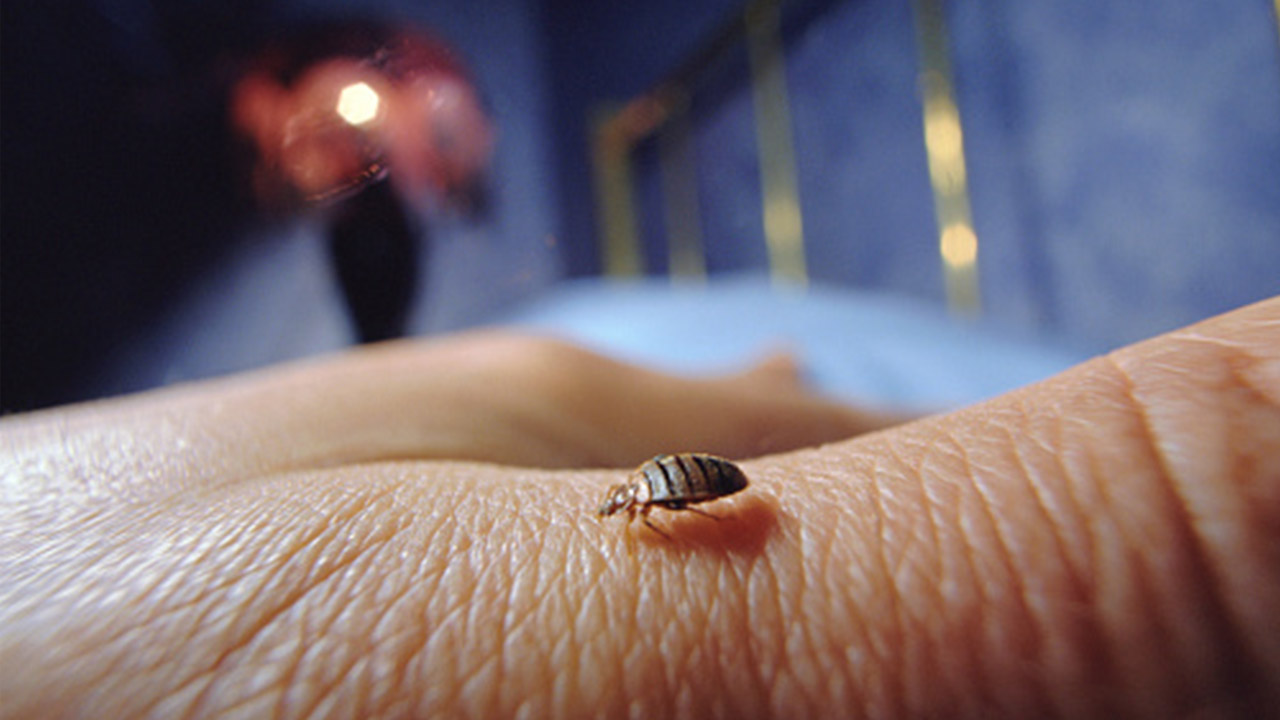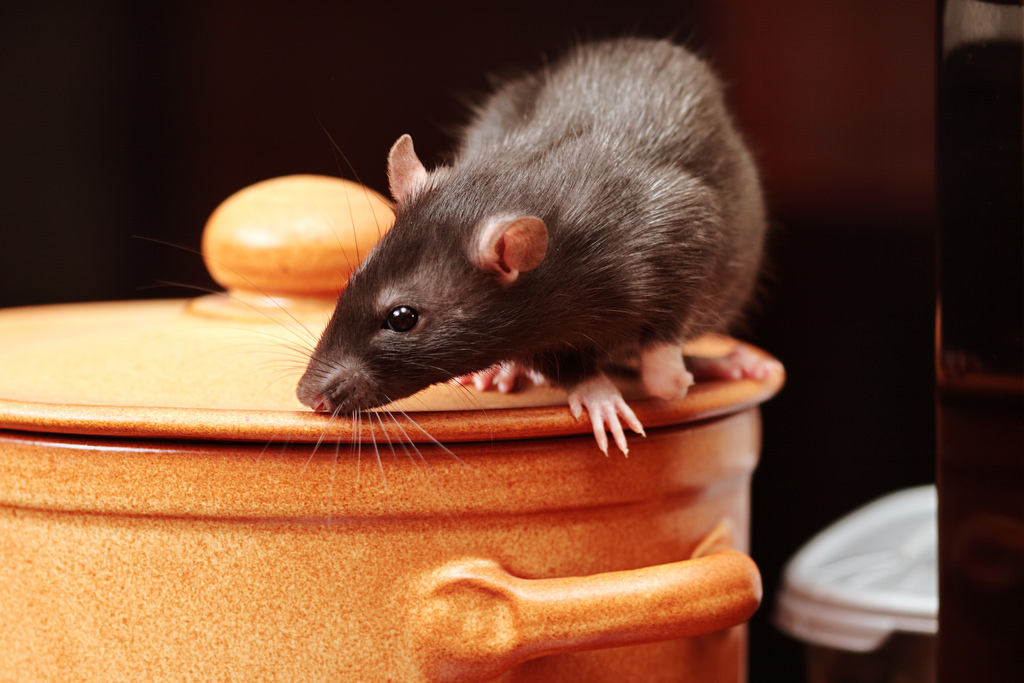What to Do If Pests Come to Light While Selling Your Home
Selling a home can be a stressful process, and discovering pests in your property during this time can add an extra layer of complexity to an already complicated situation. Pests such as rodents, termites, bed bugs, and cockroaches can cause significant damage to a property and pose health risks to potential buyers. In this article, we’ll discuss what to do if pests come to light whilst selling your home.
Identify the Pest and Extent of Infestation
The first step in dealing with a pest problem is to identify the type of pest and the extent of the infestation. Some pests such as rodents and cockroaches can be easily visible, while others such as termites and bed bugs may require a professional inspection to determine their presence. It’s important to determine the extent of the infestation to
 understand the potential damage to the property and the cost of treatment.
understand the potential damage to the property and the cost of treatment.
Contact a Pest Control Professional
Once you’ve identified the pest and the extent of the infestation, it’s essential to contact a reputable pest control professional. A professional will be able to assess the situation and provide advice on the best course of action. They can also provide a quote for the cost of treatment and advise on any necessary precautions to take during the treatment process. If things are too extreme it may put potential buyers off, however you can always choose a we buy any home company for help.
Disclose the Pest Problem to Potential Buyers
It’s essential to disclose any pest problems to potential buyers. Failure to disclose a pest problem can result in legal action and may negatively impact your reputation as a seller. Disclosing the pest problem upfront allows buyers to make informed decisions about the property and factor in the cost of treatment into their offer.
Address the Pest Problem
It’s crucial to address the pest problem before putting the property on the market. Addressing the pest problem can prevent further damage to the property and reduce the risk of health hazards to potential buyers. Depending on the extent of the infestation, treatment may involve chemical sprays, baits, traps, or heat treatment. It’s important to work with a reputable pest control professional who can advise on the most effective treatment method.
Repair any Damage
Pests such as termites and rodents can cause significant damage to a property. It’s important to repair any damage caused by pests to ensure the property is safe and habitable for potential buyers. Repairing the damage can also increase the value of the property and reduce the likelihood of any legal action from buyers.
Take Preventative Measures
Taking preventative measures can help to reduce the likelihood of a pest problem reoccurring in the future. Preventative measures can include sealing any cracks and crevices in the property, fixing any leaks, and maintaining a clean and tidy home. It’s also essential to have regular inspections from a pest control professional to identify any potential pest problems before they become severe.
Conclusion
Discovering a pest problem whilst selling your home can be a daunting experience. However, by following the steps outlined above, you can address the issue, disclose it to potential buyers, and ensure the property is safe and habitable. Working with a reputable pest control professional and taking preventative measures can help to reduce the likelihood of a pest problem reoccurring in the future. With a little effort and investment, you can sell your home with peace of mind knowing that any pest problems have been resolved.
How long do bed bug bites last
Bed bug bites can last from a few hours to a few days. And, in some cases, the bites may even take longer to heal. The bite is usually not painful but can become irritated and itchy. If you scratch the bite, it can become infected.

Bed bugs are small, flat, oval-shaped insects that feed on the blood of humans and animals. They are reddish-brown in color and about the size of an apple seed. They are most active at night and usually bite people while sleeping.
So, if you suspect you have bed bugs, don’t wait to get rid of them. The sooner you take care of the problem, the sooner you’ll be able to get rid of those pesky bites!
What does a bed bug bite look like?
Bed bugs are small, oval-shaped insects that feed on blood. They are reddish-brown and about the size of an apple seed. Bed bugs bite humans to feed on their blood. The bites are painless but can be itchy. Some people do not react to bed bug bites, while others may develop an allergic reaction.
Bed bug bites usually occur on exposed skin, such as the face, neck, arms, or hands. They often appear in a line or cluster of three to five bites. The bites may be red and swollen with a dark halo around them. Bed bug bites can cause itching and swelling, but they are not painful.
If you think a bed bug has bitten you, it is important to wash the area with soap and water to prevent infection. You should also contact your doctor or healthcare provider if you develop any skin reaction or if the bites become infected.
Treatments for bed bug bites
If you think you have bed bugs, you should look for certain signs of infestation. These include blood stains on your sheets or pillowcases, dark or rusty spots of bed bug excrement on mattresses, furniture, or walls, and bed bug bites.
Bed bug bites often appear as small, red welts on the skin. They are usually arranged in a line or cluster and may be itchy. If you have bed bugs, you will probably have multiple bites.
If you suspect you have bed bugs, there are a few things you can do to treat the bites. First, wash the area with soap and water to cleanse the bite and reduce swelling. You can also apply a cold compress to reduce itching and pain.
If the bites are particularly bothersome, consider consulting a doctor or dermatologist for further treatment options.
When should I seek medical attention for a bite?
If you are experiencing bites that you think maybe from bed bugs, there are a few things to look for. First, check for signs of bed bugs in your home, such as small brownish stains on your sheets or mattress. If you see any of these signs, it’s important to call a pest control professional to inspect your home and eliminate the infestation.
Bed bugs are not known to transmit disease, but their bites can be uncomfortable and cause irritation and swelling. Bed bugs are most often eliminated with a process called heat treatment. Heat treatment involves using high temperatures to kill bed bugs and their eggs. Heat treatment is often used with other methods, such as vacuuming or steaming, to ensure all the bed bugs are killed.
You should also seek medical attention if you are experiencing any allergic reaction to the bites, such as swelling, redness, or difficulty breathing. If you have any of these symptoms, it’s important to see a doctor immediately to rule out other potential causes and get treatment.
Safer ways to defend your home
Having critters in your home is no fun. A bad infestation can drive you to thoughts of flea foggers, ant sprays, moth balls, rat poison, and antibacterial products–toxic pesticides! But we advise keeping a cool head. There are plenty of ways to drive out pests without fouling your nest. Pest Control London explains how with this safe indoor pest control guide.
“Pesticides” is a broad term. It includes products that kill, repel, or block insects (insecticides), weeds (herbicides), fungus (fungicides), and even bacteria, viruses, moulds, and other micro-organisms (antibacterials and antimicrobials). “By their very nature, most pesticides create some risk of harm,” the EPA says. “Pesticides can cause harm to humans, animals or the environment because they are designed to kill or otherwise adversely affect living organisms.” One study found lifelong hyperactivity in laboratory animals resulted from a single dose of organophosphate pesticides on a critical day of fetal brain development.
Undaunted (or unaware), 80% to 90% of Americans use pesticides in and around the home. Those who have children are taking the biggest risk. When they use indoor pesticides for indoor pest control, they often leave residues on floors where children play and sit. The National Academy of Sciences estimates that 50% of our lifetime exposure to pesticides occurs during the first five years of life. Young children are particularly sensitive to these poisons, which can cause immediate harm and increase the risk of illness later in life, including cancer.
Why live dangerously? Here’s a step-by-step guide to minimizing your use of poisons when you require a emergency pest control and you are plagued with pests.
Top Tips At Having Safer Home
Know your pest. Do a little research before you attempt indoor pest control. Knowing the name of the critter that’s bothering you will help you come up with a non-toxic solution that works.
Build barriers. Prevent pests from coming into your home in the first place. Block their entrances by caulking holes, using door sweeps, and keeping door and window screens in good condition.
Take away their food and drink. Eliminate the sources of food and moisture that may be attracting pests. Keep sugar, flour, cereal, and pet food in sealed containers. Remove water sources by, for instance, fixing leaky pipes and removing standing water. To prevent mould, eliminate the excess moisture, fix leaks, ventilate, and use exhaust fans in the kitchen and bathrooms. If you have a persistent mould problem, you might also look into the possibility of a dehumidifier.
Go non-toxic. See what non-toxic options are available for your particular indoor pest control problem.
Soap has been used as an insecticide and antibacterial substance for many years. Just add about 2 teaspoons of liquid Castile (vegetable-based) soap to a gallon of water. (Any soap containing fatty acids will work, but liquid castile soap is recommended to avoid other toxic ingredients.) Put this mixture in a spray bottle, and-presto-you have a solution to your ant problem that is virtually non-toxic to humans and mammals unless ingested. If you add some peppermint scent, you’ll discourage the ants’ brethren from following in their footsteps. Cayenne pepper also deters ants, and lemon eucalyptus oil will keep the silverfish away. For bacteria, soap and warm water are just as effective as an antibacterial products.
Use a fan. A breeze will keep mosquitoes at bay.
For months, store clothing in air-tight containers. Mothballs are typically made of naphthalene, a possible carcinogen, and moth crystals are made of paradichlorobenzene, also a possible carcinogen. Instead, use sachets of cedar chips or lavender to deter moths. If you do have an infestation, try pesticide-free sticky traps.
For termites, prevention is key. To prevent subterranean termites, clear wood debris, wood piles, and stored lumber from around your home, including your crawl spaces. Don’t stack stored firewood against the home. Make sure there’s adequate clearance between the wood portions of your home and the ground, and install metal shields. For dry wood or damp wood termites, keep structural wood dry. Fix leaky pipes, make sure downspouts direct water away from your home, and don’t overwater shrubbery close to the home. A mist of 1 cup liquid soap, preferably vegetable-based, in 4 to 5 cups of water, will kill insects in crawl spaces and around your home’s perimeter, but termite infestations may require expert intervention.
Fruit flies reproduce in wet or moist fermenting organic matter, so your drain, the compost bucket, and your fruit bowl all look like prime real estate to them. To control them, get rid of what’s attracting them. If you suspect it’s food in your drain, tape a piece of waxed paper over the top of the drain. If you see fruit flies accumulate on the paper in a day or two, remove the paper and pour boiling water down the drain. If that doesn’t work, try ½ cup of baking soda, followed by ½ cup to a cup of vinegar. Let the drain fizz for 5 minutes, then chase with boiling water. For garbage disposal, run ice cubes made from vinegar through it to clear off any gunk that may be allowing fruit flies to breed.
Live-capture traps for rats and mice. For rats and mice, the most environmentally-friendly option is reusable traps. They trap the animal without killing it, so it can be returned to nature.
Sticky traps for insects, rats, and mice. If you are not able to set mice and rats free easily, there are also sticky traps (although these kill the animal). For insects, there are some great pheromone-laced sticky traps for pantry moths, for example. They use a sexy scent to lure male moths into the trap, interrupting the breeding cycle.
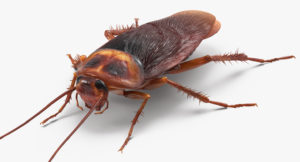
Use the least-toxic chemical option. If you must use a chemical pesticide, choose the most environmentally friendly option that targets your particular pest. The “signal” words on labels can give you a good indication of how poisonous a product is: “caution,” for instance, is milder than “warning,” which is milder than “danger.” To reduce exposure, always choose a gel or solid over a fogger or spray.
Use chemicals with care. If you need to use a pesticide, ventilate the area and clean all surfaces after you’re finished. To prevent accidental poisonings, store pesticides in a safe and secure location.
When shopping, look for
Organic, non-toxic pesticides. Generally, organic pesticides are those that come from natural sources. You can use plant-based natural pesticides with pyrethrins, rotenone, or essential oils. Or you can try boric acid or diatomaceous earth, which are also natural products. Just because a pesticide is natural doesn’t mean it’s safe, however. Pyrethrins, which are derived from flowers such as chrysanthemums, have been linked with autism. Read labels carefully and follow directions. And don’t put your faith in claims of “environmentally safe,” “environmentally friendly,” “eco-safe,” or “eco-friendly.” They have no regulated terms.
Avoid
Organophosphates. This class of pesticides has been phased out of residential use but is still found in products for pets. Skip products containing chlorpyrifos, dichlorvos, phosmet, naled, tetrachlorvinphos, diazinon and malathion.
Antibacterial products. There’s no reason to use the potentially harmful antibacterial products, and lots of reasons not to use them. Studies have consistently shown that antibacterial products are not any more effective than plain soap and water. The most common antibacterial ingredient, triclosan, has been linked to cancer, developmental defects, and liver toxicity in animals. It also may be a hormone disruptor in humans, as it is in frogs.
Sprays. Pesticides that are sprayed into the air should be avoided. They pollute indoor air and coat surfaces and usually are overkill.
Other Considerations
If pesticides are toxic to us, they can also harm our pets. Carefully select any insecticides you use to control ticks and fleas. Try some non-toxic and less-toxic options before resorting to conventional chemical tick and flea control. Vacuuming regularly catches and kills nearly 100% of adult fleas. Wash pet bedding to drown fleas, and tuck in cedar chips to repel them. (Be careful, though. Cedar can trigger asthma in some kids). Use non-chemical flea traps. For your dog, plain soap will kill fleas if left on for five minutes. Then rinse and comb with a flea comb. Collars with various essential oils can be used to repel fleas, but keep in mind that some dogs’ skin is sensitive to some oils.
Benefits…
..to your wallet
Using ingenuity and simple household remedies can solve the problem with minimum expense.
…to your health
Using fewer pesticide products or skipping them altogether will reduce your exposure to toxic chemicals.
…to the Earth
The manufacture and use of pesticides pollute the environment. For example, the use of antibacterial products in the home has created “superbugs” that are harder to control than regular bacteria. Triclosan has been found in rivers and streams and has made its way into breast milk.
Common Mistakes
Use whatever is sitting on your shelf. If you have old pesticides in your garage or basement, don’t use them unless you know they are safe. Take them to a household hazardous waste round-up site or similar location. They may contain highly toxic ingredients no longer in use.
Hoping the government will protect you against harmful pesticides. In the United States, pesticide law is not a health-based safety law. It balances health and environmental risks against economic benefits.
Choosing a broad-spectrum pesticide. A pesticide labelled as “broad spectrum” is effective against a broad range of pests and is probably not the least-toxic option.
article by https://www.pantherpestcontrol.co.uk
Why You Should Book A Pest Inspection Before Buying Your Hom
The process of buying a house isn’t easy. From deciding what realtor to go with, to what home loan suits you, or just understanding escrow, there’s a lot to get your head around.
Sadly, there’s one essential step that is often overlooked by American home buyers, and it’s one that is costing them big time.
According to Pest Alert, leaders in Dubbo pest control, before you even consider putting in an offer you should book a pre-purchase pest inspection, otherwise known as a Wood Destroying Organism (WDO) search.
Why should you have a pest inspection, you ask?
In America termites cause $5 billion in property damage each year and are known as “silent destroyers” due to their ability to render a home uninhabitable.
The more serious the infestation is the more expensive it is to get rid of them.
Not only have you got pest control to deal with but also repair work to ensure the building isn’t dangerous.
 The average cost to repair termite damage runs into the thousands and with most homeowners taking 20-40 years to pay off their home, it’s the last thing anyone needs to spend money on when a mortgage is in play.
The average cost to repair termite damage runs into the thousands and with most homeowners taking 20-40 years to pay off their home, it’s the last thing anyone needs to spend money on when a mortgage is in play.
Sadly for would-be-homeowners the signs of termite infestations are near-invisible to the untrained eye.
It can take three to eight years for the signs of an infestation to become immediately apparent, and by then, you can bet your bottom dollar major structural damage has been done…one small colony of 60,000 can eat a 2″ x 4″ in just five months.
It’s best to leave these things to the professionals and contact a pest control company. When searching for a company make sure they employ or use the services of an entomologist, who are experts in the bugs’ behavior.
DIY Bed Bug Treatment
Have you ever seen bed bugs in your home or have bites from them? A DIY bed bug treatment can be the answer to your prayers, if you are not ready to get a pest control company involved.
Luckily, many professional companies offer affordable pest control services that deal with bed bugs too. If you take action and follow the treatment outlined here from start to finish you could remove and eradicate bed bugs from your home once and for all on your own.
-
Treat bed bugs with a vacuum
The first step is to suck-up bed bugs by using a strong vacuum cleaner that has a powerful hose attached to it. Vacuum clean for at least few days in an attempt to get rid of these bed bugs. Make use of the vacuum on your bedding, your mattress, your soft furniture including cushions, chairs and sofas.
Start from the upper surfaces and make your way downwards, paying close attention to floors, carpets, and cracks present in floorboards or walls. Keep an eye on electrical appliances like laptops and fans too.
When you have completed the whole vacuum cleaning process for eradicating bed bugs, discard the vacuum bag as far as possible from your living space, so that there is no opportunity for them to get their way back in.
-
Wash your bedding and clothes
Secondly, for an effective bed bug treatment, make sure you keep washing your clothes and bedding regularly. I know this is common sense and many people do it, buts it’s best to make a conscious effort to maintain this on a more frequent basis. Keep an eye on your labels to make sure whether they can tolerate hot water or not.
Proper use of dryer heat and hot water will help in killing bed bugs.
-
Silica gel
Thirdly, silica gel. You have probably noticed the presence of small packets of silica gel in shoe boxes, food products and other items for keeping the contents dry and to kill off the insects. You can also do the same thing within your home. Here you can grind beads of silica gel and spread the powder around living space.
But note, if you have kids and pets around, this treatment may not be a good fit, as the ground silica gel can be harmful.
-
Alcohol
Fourthly, using alcohol for bed bug treatment is another approach that can help. All you need to do is, pour some alcohol in a bottle and spritz it on the areas where you feel the presence of irritating bed bugs. This alcohol can help in killing bugs easily.
-
Scented dryer sheet
Fifthly, scented dryer sheets can assist in eliminating bed bugs as they encourage them to shift to a new place for their habitat. This solution is quite temporary as you will need to still eradicate them from their new settlement.
-
Double-sided tape
Sixthly, use double-sided tape around the circumference of your bedposts at the floor ends. This way, if bugs try climbing on your bed, they will be trapped at the base of your bed posts.
-
Baking soda
Baking soda is well known for absorbing moisture in the refrigerator but it can also be used for sucking the moisture out of the bodies of bed bugs. You can sprinkle the baking soda on the places where you feel the presence of bed bugs. Make sure you vacuum it properly and reapply after a few days.
Trying these effective DIY methods for bed bug treatment can get the job done and remove these pesky pests. You can also contact a local professional pest control company near you to get rid of these bed bugs 100% hassle-free.
Birmingham Office, Highfield Farm, Middle Ln, Birmingham B38 0DX
0121 695 9076
Calgary home severely damage after lightning strike

The Calgary Fire Department said a house in University Heights sustained “severe damage” in a fire that was caused by a lightning strike early Monday morning.
Crews responded to the house fire at 2:15 a.m.
The home was damaged, as was a nearby tree.
“The fire was quickly brought under control and crews were remaining on scene through the night looking for hot spots and extension,” the CFD said in a news release.
A fire investigator was also on scene to determine the extent of the damage.
Enmax also responded to check the utility services.
Pest Control Calgary
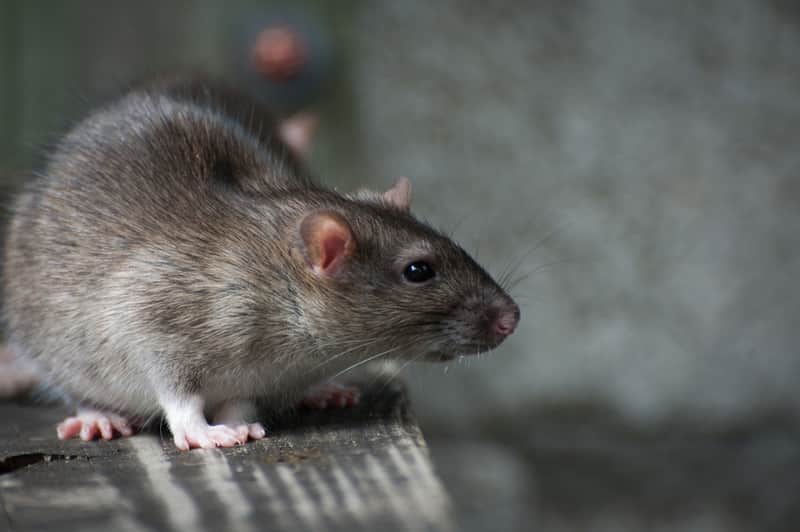
The mild, rainy ocean climate has long been the envy of Canadians looking to escape the cold of more eastern provinces. But the conditions that make Calgary appealing to humans are exactly the same that make it an ideal home for pests who wouldn’t be able to survive the cold dry winters further east.
The dense vegetation that covers much of Calgary is home to a wealth of wildlife and associated pests that thrive in the temperate climate. As BC’s primary gateway to Pacific trade, Calgary harbours also offer some unique challenges for pest control and require continuous monitoring and prevention to ensure that infestations don’t take hold.
There’s nothing quite as frustrating as a pest problem. They can become a huge issue, whether you’re a homeowner or a business manager. That’s why Natural Pest Solutions offers pest control services in Calgary and the surrounding areas like. If you find unwanted rodents, insects, or other wildlife on your property, give us a call. We offer flexible hours so you can call us any time of day, any day of the week.
Natural Pest Solutions
995 Madeira way NE.
Calgary, AB. T2A-5T4
phone 587-318-0435
https://mynaturalpestsolutions.com/ca/calgary-pest-control/
Most Popular Calgary Neighbourhoods to Reside


Natural Pest Solutions
995 Madeira way NE.
Calgary, AB. T2A-5T4
phone 587-318-0435
https://mynaturalpestsolutions.com/ca/calgary-pest-control/
Overview of Calgary
Calgary is divided into four quadrants, and the quadrant in which a particular neighborhood of Calgary is situated is reflected in its street address, which ends in NW, SW, SE or NE. Avenues typically run east-west, while streets run north-south. Once you adjust to this system, navigating around Calgary becomes very easy.
The public transport system in Calgary isn’t as comprehensive as those seen in other large Canadian cities. That doesn’t mean that you need a car here, but, compared to some other cities, proximity to your workplace may be a more important consideration when assessing the best neighborhoods in Calgary for you.
Traveling between quadrants (e.g Southwest to Northeast) can be tricky on public transport, and heavy traffic congestion is also common if you have to drive across bridges during rush hour. The morning and evening commute shouldn’t be your only consideration when choosing a new place to call home among the many Calgary neighborhoods. Let’s take a closer look at the pros and cons of each of these four Calgary quadrants.
Calgary, like Alberta in general, relies heavily on the oil and gas industry, thus generating regular ‘boom’ and ‘bust’ cycles. The city is recovering from recession, and there’s plenty of residential construction taking place across the city. New condominium (condo) units are popping up across Calgary, boosting an already steady supply of residential properties.
As with most cities, Calgary neighborhoods closer to downtown tend to be more expensive, and neighborhoods that further out tend to be less expensive. Bear this in mind when researching where to live in Calgary. Downtown locations, such as the Beltline and Kensington, are becoming increasingly popular, however, because there’s no need for residents to splash as much cash on public transport or hefty parking costs.
The suburbs of Calgary are typically newer and, with an ever-sprawling city, many larger homes have been built in the suburbs. Houses in desirable inner-city Calgary neighborhoods tend to retain value and appreciate more than houses in the outer suburbs.
When selecting the best place to live in Calgary, you may also be influenced by your age and lifestyle. For example, if you have a young family, the best neighborhoods in Calgary for you may be in the suburbs, where your kids can walk to school and participate in sports.
New and seasoned home buyers will enjoy the many different neighbourhoods to choose from in the Calgary real estate market, as well as the variety of houses, apartments and townhouses available in our listings. Depending on what type of lifestyle you prefer, you could be right in energetic downtown Calgary, or a more suburban setting close to beautiful parks or near top-rated schools. Regardless, you’ll always be surrounded by Calgary’s natural beauty.
Many homes in Calgary experience problems with pests and need assistance with pest control and termite control.
The most common breed of mouse in Calgary is the house mouse. They vary in color from white to grey and light brown to black. These critters have a strong sense of hearing and communicate with other mice by squealing — some audible to humans and extend to an ultrasonic range.
Did you know that house mice are known for their quick reproduction? One female house mouse has the ability to produce up to 8 litters per year!
Our technicians are more than just mouse catchers! They have the structural know-how and hands-on skills to provide permanent solutions to most structural deficiencies that might be causing mice to come inside.
Natural Pest Solutions
995 Madeira way NE.
Calgary, AB. T2A-5T4
phone 587-318-0435
https://mynaturalpestsolutions.com/ca/calgary-pest-control/
KNOW MORE ABOUT SALMON ARM

Salmon Arm is located on an arm of Shuswap Lake. This popular lake provides for a host of summer activities and brings locals and visitors alike to experience what the area has to offer. Water sports are one of the main attractions with several locations good for swimming and boating. Fishing is also popular with several species of fish including Kamloops, Rainbow, Bull, and Eastern Brook Trout, Kokanee, Whitefish, Lingcod, and Perch. Take a walk on the Salmon Arm Wharf, a wooden boardwalk that is the longest inland wooden curved wharf in Canada. A scenic stroll will offer a great view of the bird sanctuary and ecological reserve. For the more active visitors there are trails for hiking, biking, horse riding, and mountain biking and in the winter snowmobiling is a favorite pastime.
Salmon Arm is located on Trans-Canada Highway 1, 108 km (67 mi) east of Kamloops and 60 km (37 mi) north of Vernon in the Thompson Okanagan region.
Pest Control in West Kelowna
As a professional pest control company in the West Kelowna area, our goal is to create a pest-free 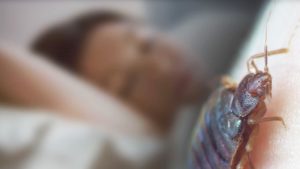 environment for you and your family. More than that, we also want to build a relationship of trust with every customer. One of the many ways we do that is by providing the best pest control service in the city. We take pride in our work and our service and will always answer your call.
environment for you and your family. More than that, we also want to build a relationship of trust with every customer. One of the many ways we do that is by providing the best pest control service in the city. We take pride in our work and our service and will always answer your call.
There’s no need to worry, we have it all under control! Give us a call anytime, 24 Hours – 7 days a week. Pests don’t wait to work around your schedule, which is why we’re always there when you need us.
Call us today for a survey of your pest problem. Our team is ready and eager to respond to your immediate needs.
Natural Pest Solutions
Salmon Arm, BC, Canada
(778) 765-2999
https://mynaturalpestsolutions.com/ca/salmon-arm-pest-control/

